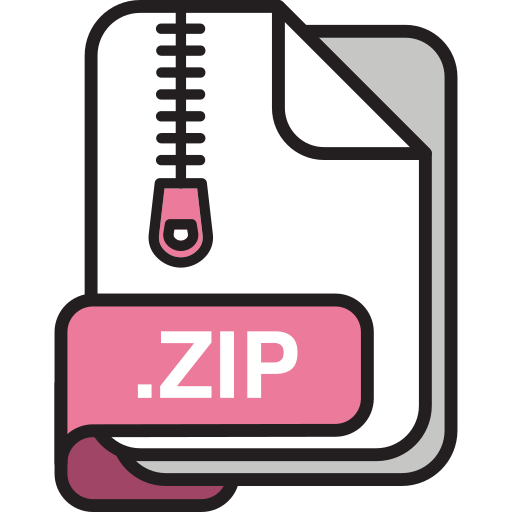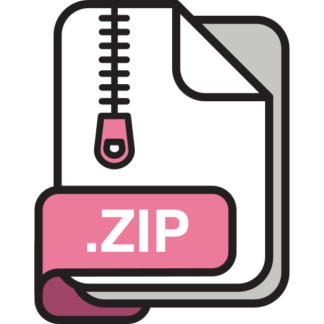Description
1 Introduction
In this assignment we will consider a game played on a square board by two players. The board is
divided into a grid of size R × R where players take turns placing tiles. The game is won by the
player who is able to place k of their tiles in adjacent positions within the same row, column, or
diagonal of the grid. However, there are several unavailable squares in the grid where tiles cannot
be placed. If while playing the game there are no more empty squares in the grid to place tiles and
no player has won the game, then the game ends in a draw.
For this assignment you will be tasked with writing several Java classes needed for a program
to play the above game. The game will be played between a human player and the computer. The
values of R and k are parameters of the program. You will be provided part of the code for this
assignment, so you must follow the specifications below closely to ensure that your code will work
correctly with the code provided.
Figure ?? shows a possible set of tiles on a board of size 4 × 4 where k = 3; in this figure the
human player uses yellow tiles and the computer uses green tiles. Unavailable positions are dark
blue squares and empty positions are light blue squares. In Figure ??(a) the computer has placed
three green tiles in adjacent positions of the same diagonal, so it has won the game. In Figure ??(b)
the game has ended in a draw.
(a) (b)
Figure 1: (a) The computer wins. (b) The game is a draw.
One of the Java classes provided to you will select the plays that the computer will make. If you
are interested in knowing how the algorithm for playing the above game works additional information
is in the file OptionalInfo.pdf.
2 Game States
A game state shows the position of every tile on the board. Your program will represent a game
state as a string formed by the characters ’h’, ’c’, ’e’, and ’u’ as follows. A tile used by the computer
is represented with the letter ’c’; a tile used by the human player is represented with the letter ’h’;
an empty square in the board is represented with ’e’, and an unavailable position in the board is
represented with ’u’.
To form the string representation for a given game state we concatenate the characters corresponding to the tiles, empty, and unavailable positions on the board starting at the upper left position
and moving top to bottom and left to right. For example, for the game states in Figure 2, their
string representations are “chhhcehce”, “chhhcchcu”, and “chhhcuhcc”.
(a) (b) (c)
1 2 3 1 2 3 1 2 3
4 5 6
7 8 9
4 5 6
7 8 9
4 5 6
7 8 9
Figure 2: Game states.
Each game state is assigned a score. The higher the score is the better the current state of the
game is for the computer. Conversely, the lower the score is the better the current state of the game
is for the human player. The program will use the following four scores for game states:
• 0: for the game states where the human player wins
• 1: for the game states where no player has won and the game is not a draw
• 2: for the game states where the game is a draw
• 3: for the game states where the computer wins the game.
For example, if k = 3, the score for the board shown in Figure 2(a) is 1. The score for the board
displayed in Figure 2(b) is 2 and for the board in Figure 2(c) is 3.
As mentioned above when playing the game the computer and human player will take turns
placing tiles on the board. In each turn of the computer the program will consider all positions
where it can place a tile and what the potential outcome is for putting it there; at the end it selects
the best possible position to put its tile. Since there is a very large number of possibilities that the
program needs to consider, to speed it up the program will use a hash table to store game states
that it has already processed; this way the program will not have to consider the same game state
multiple times.
3 Classes to Implement
You are to implement the following Java classes: Record.java, Dictionary.java, and
Evaluate.java. You can implement more classes if you need to. You must write all the code
yourself. You cannot use code from the textbook, the Internet, or any other sources. You cannot
use Java’s Hashtable class or hashCode() method.
3.1 Class Record
This class represents the records that will be stored in the hash table, implemented in the below
class Dictionary.java. An object of this class stores a string and two integers; therefore there will
be three instance variables in this class. The string stored in an object of this class will be used as
its key attribute.
For this class, you must implement all and only the following public methods:
• public Record(String key, int score, int level): The constructor for the class.
• public String getKey(): Returns the string stored in this Record object.
2
• public int getScore(): Returns the first integer stored in this Record object.
• public int getLevel(): Returns the second integer stored in this Record object.
You can implement any other methods that you want to in this class, but they must be declared as
private methods.
3.2 Class Dictionary
This class implements a dictionary using a hash table in which collisions are resolved using separate
chaining. The hash table will store objects of the class Record.
You will decide on the size of the table, keeping in mind that the size of the table must be a
prime number.
You must design your hash function so that it produces few collisions. A bad hash function that
induces many collisions will result in a lower mark. You are required to use a polynomial hash
function. As mentioned above, you cannot use Java’s hashCode() method in your hash function.
For this class, you must implement all the public methods in the following interface:
public interface DictionaryADT {
public int put(Record rec) throws DuplicatedKeyException;
public void remove(String key) throws InexistentKeyException;
public Record get(String key);
public int numRecords();
}
The descriptions of these methods follows:
• public int put(Record rec) throws DuplicatedKeyException: Inserts the given
Record object referenced by rec in the dictionary. This method must throw a
DuplicatedKeyException (see below) if the string stored in the object referenced by
rec is already in the dictionary.
You are required to implement the dictionary using a hash table with separate
chaining. To determine how good your design is, we will count the number of collisions
produced by your hash function. Method put must return the value 1 if the insertion of the
object referenced by rec into the hash table produces a collision, and it must return the value
0 otherwise. In other words, if for example your hash function is h(key) and the name of your
table is T, this method must return the value 1 if the list in entry T[h(rec.getKey())] of the
table already stores at least one element; it must return 0 if that list was empty before adding
the new record.
• public void remove(String key) throws InexistentKeyException: Removes the Record
object containing string key from the dictionary. Must throw a InexistentKeyException if
the hash table does not store any Record object with the given key value.
• public Record get(String key): A method which returns the Record object stored in the
hash table containing the given key value, or null if no Record object stored in the hash table
contains the given key value.
• public int numRecords(): Returns the number of Record objects stored in the hash table.
Since your Dictionary class must implement all the methods of the DictionaryADT interface,
the declaration of your method should be as follows:
public class Dictionary implements DictionaryADT
3
You can download the file DictionaryADT.java from OWL. The only other public method that you
can implement in the Dictionary class is the constructor method, which must be declared as follows
public Dictionary(int size)
this initializes a dictionary with an empty hash table of the specified size.
You can implement any other methods that you want to in this class, but they must be declared
as private methods (i.e. not accessible to other classes).
Hint. You might want to implement a class Node storing an object of the class Record to
construct the linked lists associated to the entries of the hash table. You do not need to follow this
suggestion. You can implement the lists associated with the entries of the table in any way you want.
3.3 Class Evaluate
This class implements all the auxiliary methods needed by the algorithm that plays the game. For
details on the algorithm that plays the game, please read document OptionalInfo.pdf posted in
OWL as an optional reading for this assignment.
The constructor for this class must be as follows
public Evaluate (int size, int tilesToWin, int maxLevels)
The first parameter specifies the size of the board, the second parameter is the number of adjacent
tiles needed to win the game, and the last parameter specifies the playing quality of the program
(the higher this value is the better the program will play, but the slower it will be; when you test
your program use values between 3 and 5 for this parameter so the program plays OK but it is not
too slow).
This class must have an instance variable called gameBoard of type char[][] to store the board.
This variable is initialized inside the constructor so that every entry of gameBoard stores the character
’e’ indicating that every position of the board is empty. As the game is played, every entry of
gameBoard will store one of the characters ’c’, ’h’, ’e’, or ’u’. This class must also implement the
following public methods.
• public Dictionary createDictionary(): returns an empty Dictionary of the size that you
have selected. Remember that the size of the dictionary must be a prime number.
• public Record repeatedState(Dictionary dict): This method first represents the content
of the two dimensional array gameBoard as a string as described in Section 2; then it checks
whether there is a record in dict with this string as key attribute: If there is, this method
returns the Record object that contains it; otherwise the method returns the value null.
• public void insertState(Dictionary dict, int score, int level): This method first
represents the content of gameBoard as a string as described in Section 2, then it creates an
object of the class Record storing this string, score, and level; finally, this Record object is
stored in dict. Remember that the hash table cannot store two records with the same key
attribute.
• public void storePlay(int row, int col, char symbol): This method stores symbol in
gameBoard[row][col].
• public boolean squareIsEmpty (int row, int col): This method returns true if
gameBoard[row][col] is ’e’; otherwise it returns false.
• public boolean tileOfComputer (int row, int col): This method returns true if
gameBoard[row][col] is ’c’; otherwise it returns false.
4
• public boolean tileOfHuman (int row, int col): Returns true if gameBoard[row][col]
is ’h’; otherwise it returns false.
• public boolean wins (char symbol): Returns true if there are the required number of adjacent tiles of type symbol in the same row, column, or diagonal of gameBoard; otherwise it
returns false.
• public boolean isDraw(): Returns true if there are no empty positions left in gameBoard;
otherwise it returns false.
• public int evalBoard(): Returns one of the following values:
⊲ 3, if the computer has won, i.e. there are the required number of adjacent ’c’s in the same
row, column, or diagonal of gameBoard.
⊲ 0, if the human player has won, i.e. there are the required number of adjacent ’h’s in the
same row, column, or diagonal of gameBoard.
⊲ 2, if the game is a draw.
⊲ 1, if the game is still undecided, i.e. no player has won and the game is not a draw.
You can implement more methods in this class, if you want, but they must be declared as private.
4 Classes Provided
You can download classes DictionaryADT.java, PosPlay.java, Play.java,
InexistentKeyException and DuplicatedKeyException from OWL. Class PosPlay is an
auxiliary class used by PlayGame to represent plays. Class Play includes the main method for the
program. The program will be executed by typing
java Play inputFile
where inputFile is the name of a text file containing the description of the game board. The format
of this file is as follows:
• The first line is the size of the gameboard
• The second line is the number of tiles of the same player that need to appear in adjacent
positions of the same row, column, or diagonal for that player to win the game.
• The third line is a parameter specifying the playing quality of the program. The larger this
value is the better the program will play, but the slower it will be.
• The remaining lines of the file contain the characters ’e’ and ’u’. Character ’e’ indicates an
empty position of the board, and ’u’ indicates an unavailable position of the board.
The following sample input file specifies a board of size 4 × 4 in which 3 symbols in adjacent
positions are needed to win, and the quality parameter is equal to 3. In the game board all positions
except two positions in the center are empty.
4
3
3
eeee
eeue
euee
5 CS 2210 Assignment 2
eeee
Class Play also contains methods for displaying the game board on the screen and for allowing
the human player to place their tiles.
5 Testing your Program
We will perform two kinds of tests on your program: (1) tests for your implementation of the
dictionary, and (2) tests for your implementation of class Evaluate. For testing the dictionary we
will run a test program called TestDict which performs a few simple tests to check whether your
dictionary works as specified. We supply you with a copy of TestDict so you can use it to test your
implementation.
6 Coding Style
Your mark will be based partly on your coding style.
• Variable and method names should be meaningful and they must reflect their purpose in the
program.
• Comments, indenting, and white spaces should be used to improve readability.
• You must only use instance variables for data which needs to be maintained throughout the
life span of an object. In other words, variables which are needed only inside methods should
be declared as local variables inside those methods.
• All instance variables should be declared private to maximize information hiding. Any outside
access to these variables should be done with accessor methods (like getScore() for class
Record).
7 Marking
Your mark will be computed as follows.
• Program compiles, produces meaningful output: 2 marks.
• Dictionary tests pass: 4 marks.
• Evaluate tests pass: 4 marks.
• Coding style: 2 marks.
• Hash table implementation: 4 marks.
• Evaluate program implementation: 4 marks.
8 Notes About Eclipse
If you are using Eclipse, please read the tutorials in the FAQ page of OWL to learn how to pass the
name of the input file as parameter to your program. Depending on how you configured Eclipse, in
most cases for Eclipse to find the input file you must place it in the project’s root directory; this is
the folder that contains the src and bin folders. The provided image files must also be placed in
the project’s root directory.
If Eclipse cannot find any of the above files, move them around within your project root’s directory
until Eclipse finds them. Alternatively you can place all java files, input files, and image files in the
6 CS 2210 Assignment 2
same folder and compile your program by typing javac Play.java and then run the program by
typing java Play inputFile, where inputFile is the name of the input file.
9 Handing In Your Program
You must submit an electronic copy of your program. To submit your program, login to OWL and
submit your java files from there. DO NOT put your code in sub-directories. DO NOT compress
your files or submit a .zip, .rar, .gzip, or any other compressed file. Only the .java files that you have
written must be submitted. If you do not follow this guidelines you might lose marks.
Remember that the TA’s will test your program on the computers of the Department.
When you submit your program, we will receive a copy of it with a datestamp and timestamp.
If you submit your program more than once we will take the latest program submitted as the final
version, and will deduct marks accordingly if it is late.
7 CS 2210 Assignment 2




